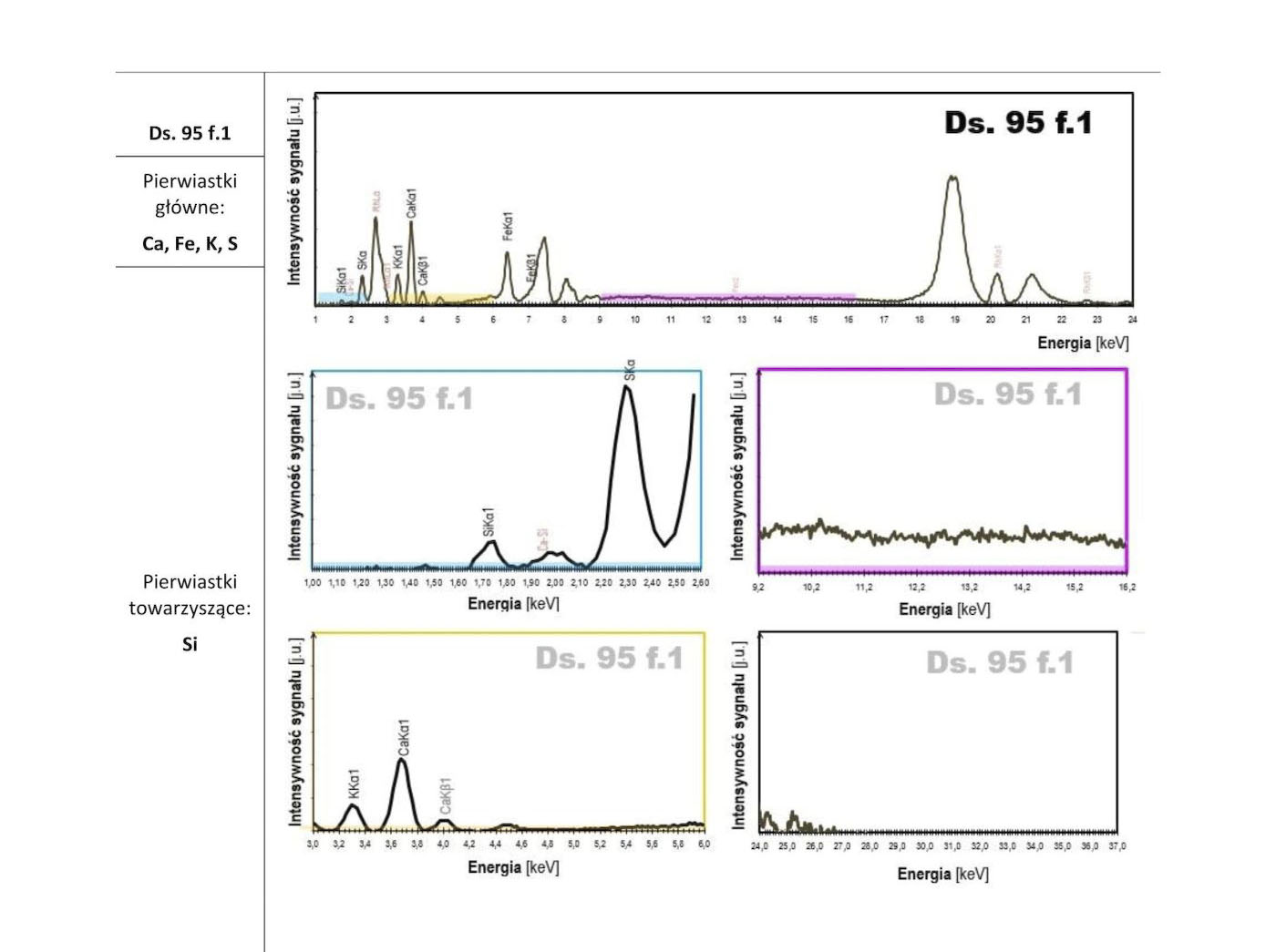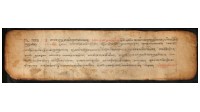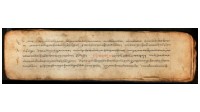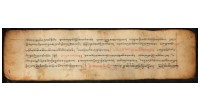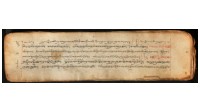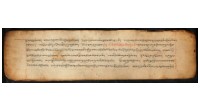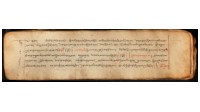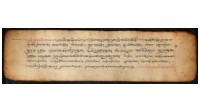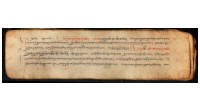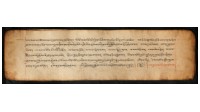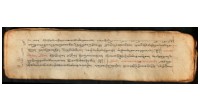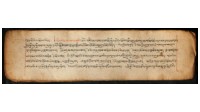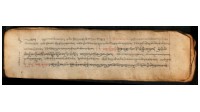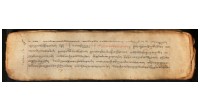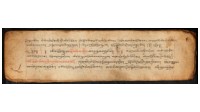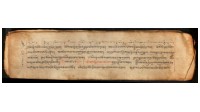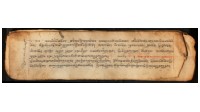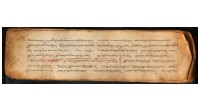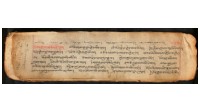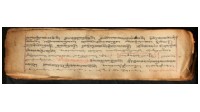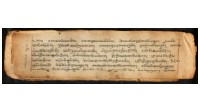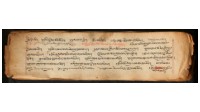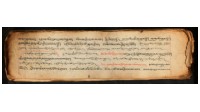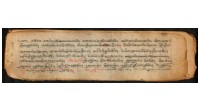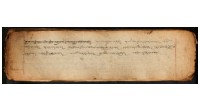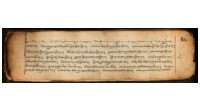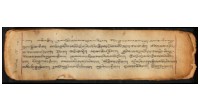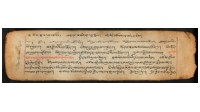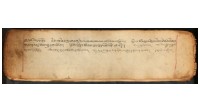DRANGSONG MANUSCRIPTS
| 1. Text number | Drangsong 095 |
| 2. Text title (where present) in Tibetan |
༄༅།།མེན[མན]ངག་སྤུ་གྲི་འབར་བའི་འཁོར་ལོ་བཞུགསྷོ།།༄༅།། བཙན་རྒོད་རྨྱུར་པ་སྲོག་ལེན་གྱིས[གྱི]གནད་སྐུལ[བསྐུལ]བཞུགས་སོ།།༄༅།། བསྟེན[བསྟན]སྲུང་བྲག་བཙན་དམར་པོའི་སྐུལ[བསྐུལ]བ་བཞུགསྷོ།།༄༅།། ཡང་ཅིག་བྲག་བཙན་སྐུལ[བསྐུལ]པ[བ]ནི།༄༅།། ཨ་བསེ་དུར་ཁྲོད་མི[མའི]སྐུལ[བསྐུལ]བཞུགསྷོ།།༄༅།། ཨ་བསེ་སྐུལ[བསྐུལ]པ[བ]ཟབ་མོ་བཞུགསྷོ།།༄༅།། ཡང་ཅིག་བྲག་བཙན་སྐུལ[བསྐུལ]པ[བ]བཞུགསྷོ།།༄༅།། ཨ་བསེ་དུར་ཕྲོད[ཁྲོད]མའི་སྐུལ[བསྐུལ]པ[བ]བཞུགསྷོ།།༄༅།། འདོད་བསོལ[གསོལ]ཁ་སྐོངས[སྐོང]བཞུགསྷོ།། |
| 3. Text title (where present) in Wylie transliteration | 1. men[man] ngag spu gri ’bar ba’i ’khor lo bzhugs s+ho/
2. btsan rgod rmyur pa srog len gyis[gyi] gnad skul[bskul]bzhugs so/ 3. bsten[bstan] srung brag btsan dmar po’i skul [bskul]ba bzhugs+ho/ 4. yang cig [gcig] brag btsan skul [bskul] pa [ba] ni/ 5. a bse dur khrod mi[mi] skul[bskul] bzhugs+ho/ 6. a bse skul[bskul pa[ba] zab mo bzhugs+ho/ 7. yang cig[gcig] brag btsan skul[bskul] pa[ba] bzhugs+ho/ 8. a bse dur phrod[khrod] ma’i skul[bskul] pa[ba] bzhugs+ho/ 9. ’dod bsol[gsol] kha skongs[skong] bzhugs+ho/ |
| 4. A brief summary of the item’s contents | A prayer of offering to encourage and invocation for the protector deity a bse |
| 5. Number of folios. | 13 |
| 6. item number and filenames of the corresponding photographs;
|
v095_IMG_2824 – 2842 |
| 7. Translation of title | 1. The burning sword cycle of the secret oral instruction
2. An encouraging invocation to the wild btsan deity 3. An encouraging invocation to the doctrine protector red-rock btsan deity 4. Once encouraging to the btsan deity 5. An encouraging invocation to the cemetery deity a bse 6. An esoteric encouraging invocation to the a bse deity 7. Once encouraging to the btsan deity 8. An encouraging invocation to the cemetery deity a bse 9. A rituals of complementary fulfilling offerings |
| 8. Transcription of colophon | ces pa’i byar[dbyar] pa nag po dug dang dgra[’dra] pa’i man ngag ’di/ a rtsa ra sngags kyi khon[sgom] pa’i[pas] bsungsp[gsung] pa’i bka’ la sten[brten] nas/ mtshungs med gsang sngags sgrags[grags] pa chen po’i[pos] nan kyis (gyis) yang yang skul ngor sten[rten] gyi ched du bsam pas/ rang lo nong pas cung zad dang ldan par cas ste[te]/ kod par gyis pas sten[bstan] dgra phra mo rtsa nas cod[gcod] pa’i spu gri’i ’khor lo thogs med du sgyur cig/ ’di ni bkra shis smin zhing grol pa’i ri khord du/ rim sgro[khord] pa cig dang kho rang gi nyer chig[gcig] dang/ de snyis zungs rtsam ma stogs[gtogs] pas/ sus kyang chor[’chor] med kyis dam gongs sa ma ya na ra kan/ sus stang[btang] na rnyal[dmyal] pa’i snas[gnas] su ltungs/ ’di sangs rgyas ’tshul du thub rgyur nas/ rnal ‘byor sten[bstan] pa’i ’phrin las rgyas gyur cig/ bkra shis/
ces skul lo/ sa ma ya kha tham rgya rgya rgya/ brtsan rgod rmyur pa srog len rnad[gnad] skul ’di/ spu gri ’bar ba’i ’khor lo’i nyer khor du/ phyogs 1 skod[bkod] pa’i bstan dgra rtsa nas cod[gcod]/ rnal ’byor ’dod pa’i phrin las rgyas gyur cig/ shing yos hor zla rgyad pa’i tshes 9 la gang gis dbang po’i so/ stan[bstan] dgra sdig chen nyams par tshar cod[gcod] par shog/ bkra shis/ sarb manghlȧ/ ces pai tshul ’di ni sprang po khro ming pos[pas] bris/ pha spun nang du ngo khyad byed mi dang/ khyad par sprang la kha tshog byed mi rnams/ spru gri ’bar ba’i so las zlas gyur cig/ rmyur pa srog lan mo pa ’jig gsum gyi/ zhal du stob cig mi rab rtsa nas cod[gcod]/ bkra shis par shog/
’khors cing[shing] skul cing rbad/ phyi nang rten dang ra la yang/ chyabs[chag] rdabs drag du[tu] bya/ rgyas pa zhung[gzhung] du bsal[gsal]/ bkra shis/
ces bskul ba’o//
ces gser skyems stor[gtor] ro/ ra ’tshil gyi gsur ’di stang[btang]/ ra skyes yod na yang/ rtan[rten] du ’dzugs/ gang gos gyis bcol btag drag du byas/ dar dmar po g.yogs/ rol mo sgrol. Dung bus/ rkang gling bus/ a bse skangs so dang/ skul pa la rbad do/ bkra shis par shog cig/
ces skul lo/ a bse thugs sgrub rnam pa rdzogs+ho/ yig chung zur du rkod[bkod] pa zhal zhes so/ tong rgyung mthu’ chen rims[rim] par rgyud nas bdag la’o/ dge’o/ bkra shis/
|
| 9. Translation of colophon | In this way, the instruction (the text), which is like the poison of black poplar, was based on the works of Acharya sNgags kyi khon[sgom] pa, and on the repeated and earnest encouragement of gSnag sngaggs grags pa, which I completed with a little repentance as a holy support object (rten), may this be a part of the Cycle of Burning Sword (spu gri ’bar ba’i ’khor lo) that fundamentally destroys the enemies of the doctrine. This was done in the hermitage of bKra shis smin grol ri khord, where no one but except a practitioner and one of his own attendants knew, may it destroy all demons, and that if anyone were to spill (this doctrine) he would fall into hell, May it be the factor that leads to liberation and the development of the doctrine.
As it is, encouragement, samaya, rgya rgya rgya, top Secret! This text of encourage to the protecting of wild bstan deity, as a component of the Cycle of Burning Sword (spu gri ’bar ba’i ’khor lo), may it fundamentally destroy the enemies of the doctrine, and the heartfelt wishes of the Yogi can be fulfilled! That the text written by the Great Achievers on the ninth day of the eighth month of the Mongolian Year of the Wooden Rabbit. May the great evil enemy of the doctrine be destroyed, and may it be auspicious! This text was copied by the beggar who named Khro bo, may this ritual destroy all those who treat their brothers of the same father unequally, especially those who abuse and insult the beggar (me), may it take their lives swiftly and cut off from their future generations! May it be auspicious!
In anger and encouragement, sprinkle water for the supports of inside and outside as well as the goat (as the representation of the deity a bse), details of how to practice can be seen in the main sadhana collection, may it be auspicious!
Encouragement in this way.
Made a golden-drinking offering, burned offering of goat’s fat, and if there is a goat’s horn, can be a support of the deity, tied with silk and covered with red silk.
With this encouraged, a rituals of complementary fulfilling offerings is over, and furthermore, made a note in the notes that this doctrine was passed on to me from Master sTong rgyung mthu chen. May good fortune! |
| 10. Remarks | According to that, the text was composed by Sangs rgyas gling pa (1705-1735) in the Tibetan year of Wood-rabbit, which is the year 1735 AD also. In this case, it is clear that the Khro bo who consistently appear in this Drangsong collection was from the 18th century onwards.
gSang sngags sgrags pa (17C ), also known as Ye shes snying po, from the dGe bshes rtsa royal family in rGyal rong(Danba County, Ganzi Tibetan Autonomous Prefecture, Sichuan Province), he was one of the main disciple of Sang rgyas gling pa with kun grol grags pa (1700-1761). He was a important master on the lineage of dge bshes rtsa system or tradition – this ritual tradition- is generally regarded as a mixture bout of the gShen and New-Bon (Bon gsar ma) tradition. As well, the dge bshes rtsa tradition belongs to the southern lineage (lho brgyud) in the lineage of Bon Great Perfection in eastern Tibet (mDo smad) region,
The hermitage of bKra shis smin grol pa’i ri khrod, which was established gSang sngags grags pa in 17 century, now located in Brag ’go, the center of Khams (Luhuo County, Ganzi Tibetan Autonomous Prefecture, Sichuan Province). Due to a period of decline in the later, the monastery was relocated to its present site by a Yang ston master (yang ston bstan pa’i rgyal mtshan?) from Dolpo (Dolp district in Nepal now), who was known locally as Gangs ri bla ma (the master who from snowy mountains), and whose reincarnation is still in the monastery today. |
|
Back lit samples |
 |
